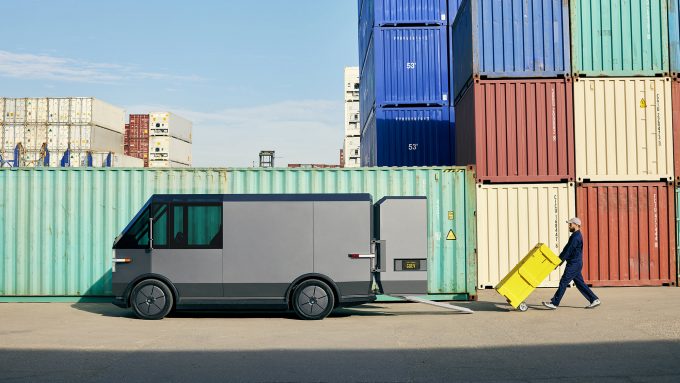Victory for US truckers, who can now choose their own chassis provider
The US Federal Maritime Commission (FMC) has ruled in favour of the American Trucking Association ...
TFII: SOLID AS USUALMAERSK: WEAKENINGF: FALLING OFF A CLIFFAAPL: 'BOTTLENECK IN MAINLAND CHINA'AAPL: CHINA TRENDSDHL: GROWTH CAPEXR: ANOTHER SOLID DELIVERYMFT: HERE COMES THE FALLDSV: LOOK AT SCHENKER PERFORMANCEUPS: A WAVE OF DOWNGRADES DSV: BARGAIN BINKNX: EARNINGS OUTODFL: RISING AND FALLING AND THEN RISING
TFII: SOLID AS USUALMAERSK: WEAKENINGF: FALLING OFF A CLIFFAAPL: 'BOTTLENECK IN MAINLAND CHINA'AAPL: CHINA TRENDSDHL: GROWTH CAPEXR: ANOTHER SOLID DELIVERYMFT: HERE COMES THE FALLDSV: LOOK AT SCHENKER PERFORMANCEUPS: A WAVE OF DOWNGRADES DSV: BARGAIN BINKNX: EARNINGS OUTODFL: RISING AND FALLING AND THEN RISING

California’s state government is making a determined push to accelerate the move to clean trucks, but a dismayed industry is warning that the fundamentals for a shift are not in place.
The California Air Resources Board (CARB) has banned the sale of diesel-powered trucks by 2036, after which all sales in the state must be for zero-emission vehicles.
Large companies and government fleets will begin purchasing zero-emission trucks next year, with a goal for all fleets operating in California to be 100%-electric by 2035, 2040 or 2045, depending on size and type of vehicle.
The regulations are estimated to result in $26.5bn in public health benefits in the state and are a notch up from federal rules, which will still allow combustion trucks like those powered by hydrogen.
However, as far as trucking executives are concerned, the new rules are not only very ambitious, but downright impossible, said Chris Spear, president of the American Trucking Associations (ATA).
“California is setting unrealistic targets and unachievable timelines that will undoubtedly lead to higher prices for the goods and services and fewer options for consumers.”
Mike Tunnell, ATA senior director of environmental affairs/research, added: “Fleets are extremely concerned over the timelines, given the unproven nature of the vehicle technology and the lack of charging and fuelling infrastructure.”
Meanwhile, Paul Brashier, VP of drayage and intermodal at ITS Logistics, noted that the necessary infrastructure is not in place.
“We are huge proponents of less emissions and a cleaner environment, but if you look at where we are right now on the grid in California and the infrastructure to support this, we’re not ready,” he said. “We’re looking to electrify about 170,000 trucks. There’s not enough power in the grid to support that.”
Ports and terminals have yet to install charging infrastructure for electric trucks, he pointed out and said it was questionable whether enough trucks would be available in the coming years to meet “CARB’s lofty goals”.
Drayage operators will be first in line to feel the impact of the new rules, when for them, from next January, only electric trucks will be eligible for new registration. Trucks with internal combustion engines in their fleets will be able to operate “through their useful’ life” – either until they hit 800,000 miles or become 18 years old.
The schedule for implementation hinges on the classification of the truck: for fleets with sleeper cab tractors, only 10% have to be electric by 2030.
The shift to electric trucks will raise costs for operators. In addition to purchase prices, they have to invest in charging capacity and operating costs are also heading up, owing to lower range and an increase in the tractor’s weight. According to ATA, these limitations will result in a need for more trucks than currently required.
Mr Brasher warned that for small and mid-sized firms, which account for a large portion of the operators, the increased costs may spell the end of the road. And less truck capacity would drive up rates higher for shippers, he added.
According to CARB, more than $32bn a year in public funding for clean vehicles and infrastructure will be available over the next four to five years, but trucking executives hope the shortcomings of the existing infrastructure and question marks over the output capacity of new electric trucks will induce CARB to adjust its goal posts.
“There’s going to have to be more dialogue with the state, especially on the infrastructure side,” Mr Brashier said.
Meanwhile, CARB’s ambitions are not confined to the road. It has also announced rules for rail operators to migrate from diesel locomotives to zero-emission units. This would mean locomotives built in 2035 for freight line-haul operations will have to comply.
Comment on this article